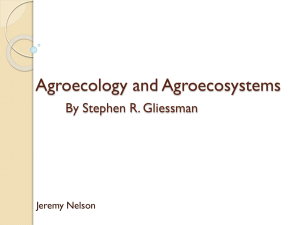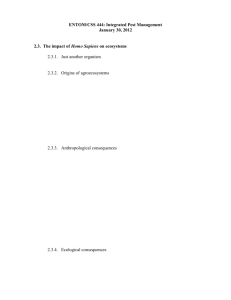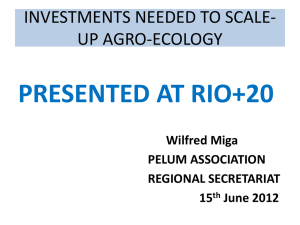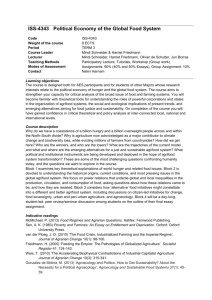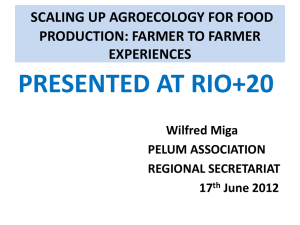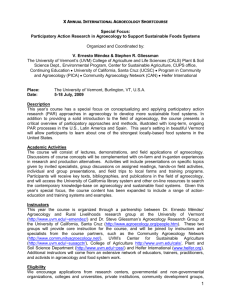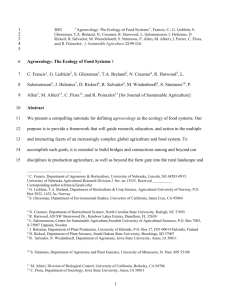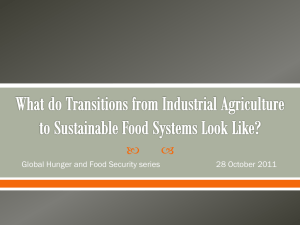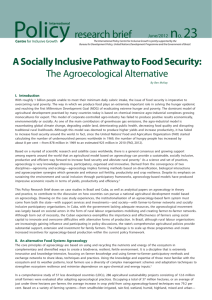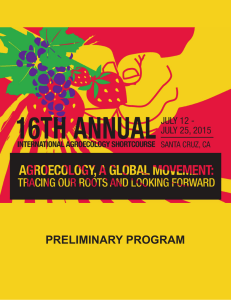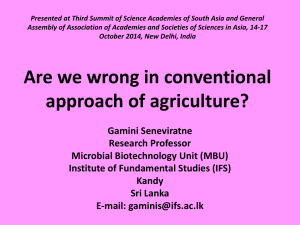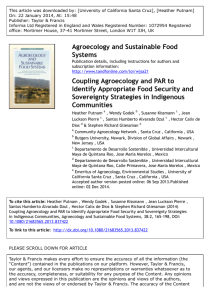13_agroecology_Rama_panda_rakeshpanda_1
advertisement
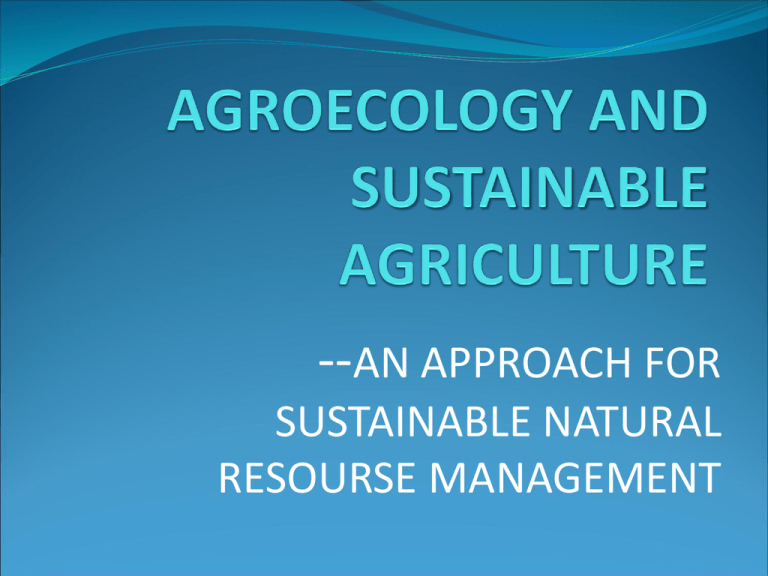
--AN APPROACH FOR SUSTAINABLE NATURAL RESOURSE MANAGEMENT We deal with The Author Concept of Agro ecosystem Difference between manipulated Agroecology and Natural Ecology Sustainable Agriculture Biodiversification and Agroecology Sustainable Agroecosystems Agroecology and the Design of Sustainable Agroecosystems Professor in University of California Agriculture ecology, rural development and integrated pest management in development countries, agroforestry systems, insect ecology and biological control and weed science. In dept. of entomology A good writer and written many books on Sustainable Agriculture and Agroecology Honored with many Awards Email-agroeco3@nature.berkeley.edu Sustainable Agriculture: Yes, but can it save the world? Miguel A. Altieri Agroecology is the science of sustainable agriculture; the methods of agroecology have as their goal achieving sustainability of agricultural systems balanced in all spheres. Self-sufficient and sustaining agriculture Basic ecological principles for how to study, design and manage agroecosystems that are both productive and natural resource conserving, and that are also culturally sensitive, socially just and economically viable Concept of Agroecosystem Agriculture + ecosystem =Agroecosystem Human involvement for food, fibre and fodder Agroecological research is the idea that, by understanding ecological relationships and processes, agroecosystems can be manipulated to improve production and to produce more sustainably, with fewer negative environmental or social impacts and fewer external inputs Difference between manipulated Agroecology and Natural Ecology Six ways difference : Maintenance at an early succession state Monoculture Crops generally planted in rows Simplification of biodiversity Plough which exposes soil to erosion Use of genetically modified organisms and artificially selected crops Semi-domesticated ecosystems that fall on a gradient between ecosystems that have experienced minimal human impact, and those under maximum human control. E.g.- Integrated pest management aims to control problematic pests through introduction of other species, not application of pesticides or herbicides to kill that pest. Method of intercropping. Elimination of unsustainable practices such as increasingly intensified pesticide use. SUSTAINABLE AGRICULTURE A whole-system approach to food, feed, and fiber production that balances environmental soundness, social equity, and economic viability among all sectors of the public, including international and intergenerational people. Biodiversification And Agroecology Objective of Agroecology is to provide balanced environments, sustained yields, biologically mediated soil fertility and natural pest regulation through the design of diversified Agroecosystem and the use of low-input technologies. By designing farming systems that mimic nature, optimal use can be made of sunlight, soil nutrients and rainfall. The optimal behavior of Agroecosystems depends on the level of interactions between the various biotic and abiotic components and keeping synergies among them is the key word. SUSTAINABLE AGROECOSYSTEMS Maintain their natural resource base. Rely on minimum artificial inputs from outside the farm system. Manage pests and diseases through internal regulating mechanisms Recover from the disturbances caused by cultivation and harvest Agroecology and the Design of Sustainable Agroecosystems Combining the different components of the farm system, i.e. plants, animals, soil, water, climate and people, so that they complement each other and have the greatest possible synergetic effects. Reducing the use of off-farm, external and nonrenewable inputs. Relying mainly on resources within the agroecosystems by replacing external inputs . Improving the match between cropping patterns and the productive potential and environmental constraints of climate and landscape. Agroecology provides the knowledge and methodology necessary for developing an agriculture that is on the one hand environmentally sound and on the other hand highly productive, socially equitable and economically viable. Agroecological design is to integrate components so that overall biological efficiency is improved, biodiversity is preserved, and the agroecosystems productivity and its self-regulating capacity is maintained. CONCLUSION Agroecology is improved economic and ecological sustainability of the agroecosystems, with the proposed management systems specifically in tune with the local resource base and operational framework of existing environmental and socioeconomic conditions. REFERENCES BOOKS Altieri Miguel A.1987, Agroecology: The Scientific Basis of Alternative Agriculture, Westview Press, Boulder Altieri, M.A. 1995. Agroecology: the science of sustainable agriculture. Westview Press, Boulder Altieri, M.A. 1992. Agroecological foundations of alternative agriculture in California. Agriculture, Ecosystems and Environment 39: 23-53. WEBSITES www.cnr.berkeley.edu www.agroeco.org www.communityagroecology.net www.perseusbooksgroup.com/westview THANK YOU ALL ANY QUESTION PLEASE !!! RAKESH KUMAR PANDA(34) RAMAKRUSHNA PANDA(35)
